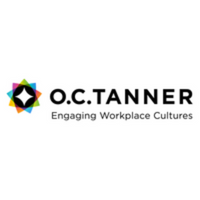Reward needs to be fair for every generation

Here are some pointers on how to ensure a rewards programme is inclusive for all:
- Foster an inclusive workplace culture – Rewards cannot demonstrate ‘inclusivity’ in isolation from the rest of the company, which is why the organisational culture must champion diversity and look to foster a sense of belonging regardless of age, race, background, gender and sexual orientation. By taking steps to make people feel that they belong and are a valuable part of the organisation, they will naturally be more open to organisational initiatives and rewards programmes. In fact, the latest research by The O.C. Tanner Institute has found that when an organisation’s culture is inclusive, employees are 141 per cent more likely to feel a sense of belonging and are 117 per cent more likely to feel enriched by the people they work with.
- Don’t create communication divides – It’s all too easy to communicate out a new initiative or a moment of recognition using the latest technology or social media platform, but this mustn’t be the only communication channel used. Baby boomers might appreciate face-to-face communications over logging into a social media platform. Similarly, don’t just rely on face-to-face presentations for effectively communicating your message to all, as Millennials, and particularly Gen X, have been known to have shorter attention spans and may not absorb all the key points. By being communication savvy and balancing human interactions with technological interactions, no group will feel excluded.
- Use recognition to bridge generational and ideological gaps – Ensure that employees are given recognition for their different perspectives and opinions rather than only ever giving recognition to ‘organisational clones’. Although employees should feel a shared sense of purpose and be able to complement the organisational culture, it’s important for all differences, including generational, to be publicly valued and appreciated.
- Celebrate careers early – To ensure career celebrations are as inclusive as possible and aren’t just focused on celebrating the longest serving employees, ensure that people are recognised from just one year of service onwards. If employees have to reach five or ten years’ service to be celebrated, this naturally excludes the younger generations who move jobs more regularly.
- Run most events during office hours – Organisations shouldn’t expect their employees to stay behind after work for all social and recognition events. Those companies that do will naturally create generational divides as the younger workers with few ‘out-of-work’ commitments will be more able to attend such events, making employees with family commitments feel left out.
Rewards are vital for heightening engagement and increasing motivation, however they can also foster bad feeling and resentment if the approach is seen as unfair or biased towards certain generations. It’s key to recognise potential areas of bias early-on and to take steps to ensure rewards are run as fairly and inclusively as possible. The benefits will be a united and highly engaged workforce in which everyone feels valued regardless of age and background.
This article is provided by O.C. Tanner.
In partnership with O. C. Tanner
Giving teams the integrated tools they need when, where and how they need them.







